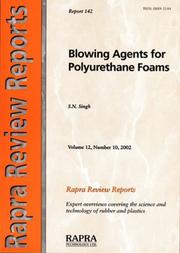| Listing 1 - 2 of 2 |
Sort by
|
Book
ISBN: 364209998X 3540882456 9786612362330 128236233X 3540882464 Year: 2009 Publisher: Berlin ; Heidelberg : Springer,
Abstract | Keywords | Export | Availability | Bookmark
 Loading...
Loading...Choose an application
- Reference Manager
- EndNote
- RefWorks (Direct export to RefWorks)
Climate change is directly linked to the human activities, according to the Fourth Assessment Report of IPCC (2007). In last two decades of 20th Century, accelerated anthropogenic activities pushed up the atmospheric abundance of greenhouse gases, mainly CO2, CH4, and N2O, alarmingly which enhanced the radiative forcing of the Earth’s surface and thus perturbed its heat radiation balance. As a consequence, atmospheric characteristics, such as temperature, rainfall pattern, levels of CO2 and O3 have changed significantly, affecting the farm productivity. Although rising level of CO2 may have fertilizing effect on C3 crops, but concomitant rise in atmospheric temperature, O3 level and extreme weather conditions can not only nullify the fertilizing effect of CO2, but also drastically reduce the crop production, threatening food security to burgeoning world population. Agricultural crops are not only victim of climate variability and extreme whether conditions, but also serve as a potential source of CH4 and N2O. Therefore, in changed scenario, Kyoto Protocol (1997) has sought all signatory developed nations to cut down their emission levels as per their differential commitments to UNFCCC and developing nations to invest in less carbon emission projects to avert the process of global warming process. In this context, the present edition, which compiles latest findings of studies carried out by the scientists on climate change and crops around the world, serves as a ready reckoner to crop scientists, atmospheric scientists, ecologists, environmentalists, research scholars and post- graduate students to update their knowledge and understanding on this issue.
Climatic changes. --- Crop yields. --- Crops and climate. --- Food supply -- Environmental aspects. --- Food supply --- Environmental aspects. --- Changes, Climatic --- Climate change --- Climate changes --- Climate variations --- Climatic change --- Climatic changes --- Climatic fluctuations --- Climatic variations --- Global climate changes --- Global climatic changes --- Food control --- Crops --- Field crops --- Yields, Crop --- Agricultural climatology --- Agriculture --- Agroclimatology --- Climate and crops --- Crop micrometeorology --- Plant biometeorology --- Environmental aspects --- Yields --- Climatic factors --- Environment. --- Climate change. --- Climate Change. --- Climate Change/Climate Change Impacts. --- Produce trade --- Food security --- Single cell proteins --- Agricultural productivity --- Soil productivity --- Climatology --- Climate change mitigation --- Teleconnections (Climatology) --- Agricultural ecology --- Bioclimatology --- Changes in climate --- Climate change science --- Global environmental change

ISBN: 1859574181 9781859574188 9781859573211 9781859574188 1859573215 Year: 2002 Publisher: Shawbury, U.K. : Rapra Technology Ltd.,
Abstract | Keywords | Export | Availability | Bookmark
 Loading...
Loading...Choose an application
- Reference Manager
- EndNote
- RefWorks (Direct export to RefWorks)
Polyurethane foams are used in many applications including household and commercial refrigerators and freezers, building insulation and roofing, doors, cushioning, packaging, sprays and marine flotation, etc. The polyurethane foam industry was radically shaken up by the discovery, in the mid 1980's, that certain chlorofluorocarbons (CFCs) used as blowing agents can damage the environment. Hydrochlorofluorocarbons (HCFCs) were developed as replacements, but they are now scheduled to be phased out as they also have ozone depleting potential. Global agreements have been introduced such as the Mont
Plastic foams. --- Manufacturing processes. --- Industrial processing --- Manufacture --- Process engineering (Manufactures) --- Processes, Manufacturing --- Processing, Industrial --- Production processes --- Industrial arts --- Production engineering --- Machine-tools --- Materials --- Cellular plastics --- Plastics, Cellular --- Foam --- Foamed materials --- Plastics --- Plastics in packaging
| Listing 1 - 2 of 2 |
Sort by
|

 Search
Search Feedback
Feedback About UniCat
About UniCat  Help
Help News
News